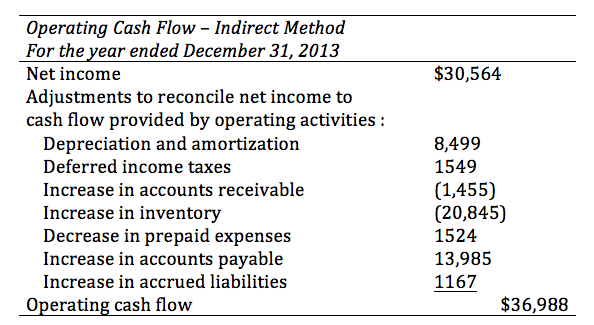Rate of Change Formula What is the Rate of Change Formula? Examples
Contents:


Determining the average rate of Change from the graph is as same as finding the slope between any two given points. Let’s take some practical problems and find the average rate of change with graphical interpretation. If we know the function and interval that we are calculating average rate of change on, we use the standard formula.
Analysis of spatial–temporal dynamic distribution and related factors … – Nature.com
Analysis of spatial–temporal dynamic distribution and related factors ….
Posted: Mon, 27 Mar 2023 12:06:59 GMT [source]
Note particularly that the average rate of change of \(s\) on \(\) is measuring the change in position divided by the change in time. So, in this example, the average rate of change over the interval is equal to 5. Remember that dividing a negative number by a negative number cancels out the negatives, leaving us with a positive result.
Average rate of Change from graphs
Here are all the times and speeds represented on this graph. To determine the average rate of change of a function, identify the points being used. Subtract the first y-value from the second y-value and divide the result by the first x-value subtracted from the second x-value. The rate of change can be depicted and calculated using the formula for rate of change, that is \(\frac-y_-x_\), commonly known as slope formula. Given the function f , Compute the average rate of change on the interval [-2, 4] by using the graph shown below.

Now open the pop-up menu of the answer cell, and from the list, click on format cells. Let’s make point 1 the left side of the interval and point 2 the right side of the interval. Sketch at least two different possible graphs that satisfy the criteria for the function stated in each part. If it is impossible for a graph to satisfy the criteria, explain why. Note that it can be calculated using the formula [f – f] / (a – b) as well.
How is average rate of change different from slope?
The average rate of change function is a process that evaluates the change in one variable quantity divided by the change in some other variable quantity. Using function notation, we can define the average rate of change of a function f from i to j. Understanding the concept and methodology of calculating the average rate of change is fundamental. It is used to mathematically describe the difference in the value of a quantity in percentage for some other amount over a specified period. The calculation of the average rate of change is straightforward. It simply takes the worth of a stock or index and divides it by its value from previous days.
- Ethan has a PhD in astrophysics and is currently a satellite imaging scientist.
- It’s important to note here that the average rate of change isn’t when you’re interested in every tiny fluctuation in a function but the general gist of the change.
- Given the function f , Compute the average rate of change on the interval [-2, 4] by using the graph shown below.
- Calculation of the average rate of change is a significant step because most traders pay very close attention to the rate upon which the worth of an item changes relative to the other object.
- If it is impossible for a graph to satisfy the criteria, explain why.
Use our free online calculator to solve challenging questions. Choose the interval over which you need to find the average rate of change. This article will elaborate on average rate of Change, average rate of Change formula, show its calculations step by step and its applications in practical situations.
Average Rate of Change Over an Interval
Where f and f are the values of the function f at points b and a respectively. The formula gives us the rate of increase the function experiences between endpoints a and b. Average rate of change means “the average rate that the value changes” which is why it is expressed as function value change divided by function input change. \(t\) \(0\) \(5\) \(10\) \(15\) \(20\) \(25\) \(30\) \(35\) \(F\) \(37.00\) \(44.74\) \(50.77\) \(55.47\) \(59.12\) \(61.97\) \(64.19\) \(65.92\) 1. Determine \(AV_\text\) \(AV_\text\) and \(AV_\text\) including appropriate units. Choose one of these quantities and write a careful sentence to explain its meaning.

Notice the line goes ‘uphill’ on this section, which is a positive slope. Also the red line is fairly steep, which indicates a higher average rate increase. Whether it is how much we grow in one year, how much money our business makes each year, or how fast we drive on average. For all of these instances, we would find the average rate of change.
Introduction of Rate of Change
Here’s an example problem for calculating average rate of change of a function. Let’s consider two different functions and see how different computations of their average rate of change tells us about their respective behavior. Plots of \(q\) and \(h\) are shown in Figures 1.3.8 and 1.3.9.
But make sure to follow the same order both in the numerator and the denominator. The number of fish in a lake https://1investing.in/ at the rate of 100 per week.

If a line were drawn between the two points used to calculate the slope, then the line would be decreasing down to the bottom right side of the graph. The average rate is the total change divided by the time taken for that change to occur. The way it is calculated is similar to how the average velocity of an object is calculated. For example, the average rate of change in a population of an area can be calculated with only the times and populations at the start and end of the period.
Alright, so now it’s time to look at an example where we are asked to find both the average rate of change and the instantaneous rate of change. For example, let’s find the instantaneous rate of change for the following functions at the given point. To find the average rate of change, we divide the change in y by the change in x .
4: Derivatives as Rates of Change
For our convenience, we’ll put 2011 in the x1 spot and 2021 in the x2 spot, so we don’t mix anything up. Now that we haverage rate of change formulae the parameters for finding out the changes, we need to choose the most effective two points to calculate the change with. We’re going to dive into exactly what an average rate of change is, how it’s applied to the real world, and how you can find it. Find the slope of the tangent to the graph of a function. It is simply the process of calculating the rate at which the output (y-values) changes compared to its input (x-values).
In addition to analyzing motion along a line and population growth, derivatives are useful in analyzing changes in cost, revenue, and profit. The concept of a marginal function is common in the fields of business and economics and implies the use of derivatives. The marginal cost is the derivative of the cost function. The marginal revenue is the derivative of the revenue function. The marginal profit is the derivative of the profit function, which is based on the cost function and the revenue function.
Opinion: ‘Budget guardrails’ blocked CT property tax reductions – The Connecticut Mirror
Opinion: ‘Budget guardrails’ blocked CT property tax reductions.
Posted: Tue, 28 Mar 2023 04:02:00 GMT [source]
Basically, the graph would be a straight line either horizontal or vertical line. So, constant ROC can also be named as the variable rate of change. In the case of constant ROC, acceleration is absent and graphing the solution is easier. The value may be either positive or negative that signified the increase or decrease ratio between two data points. If there is some quantity whose value is the same overtime then it is named as the zero rates of change.
